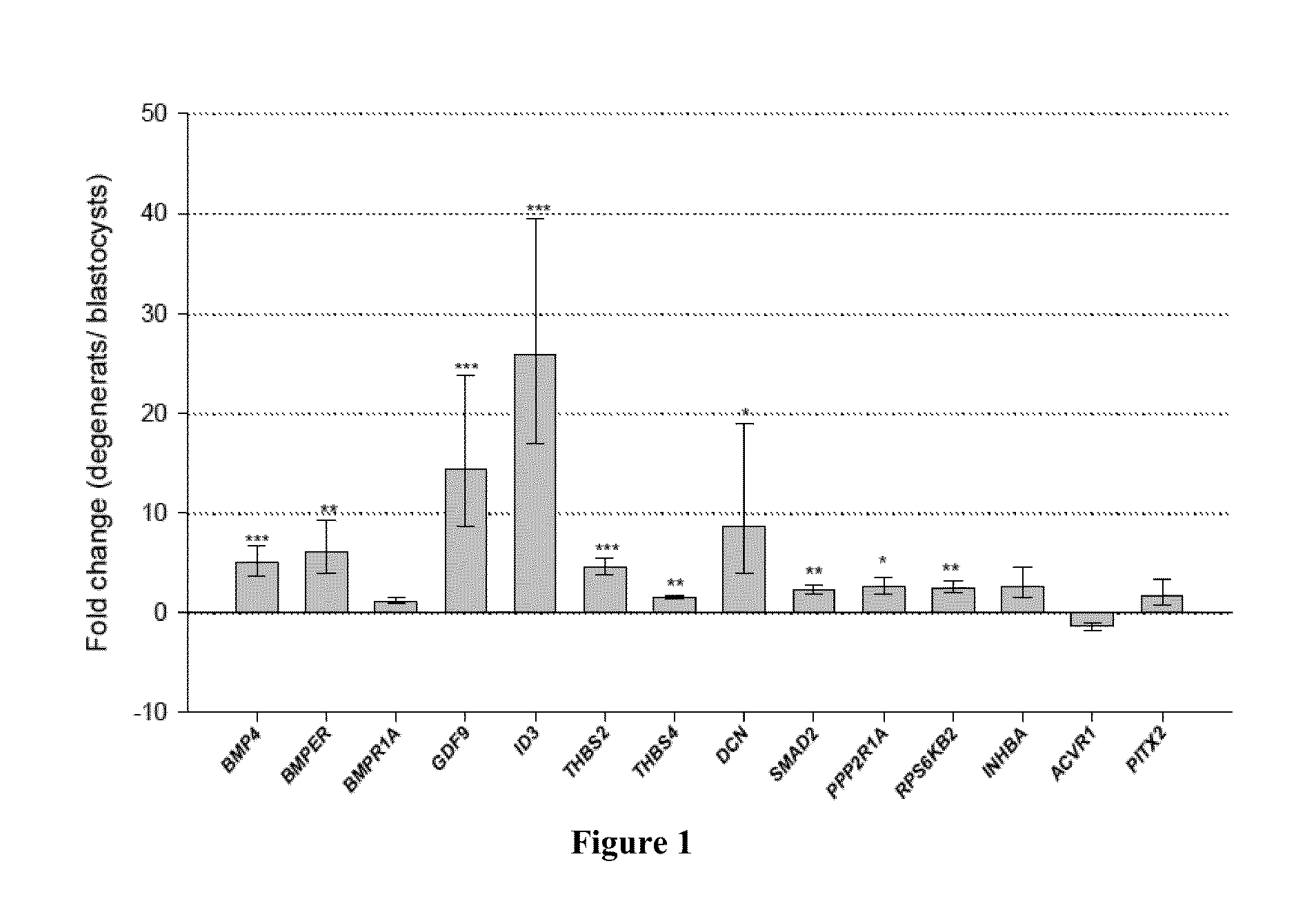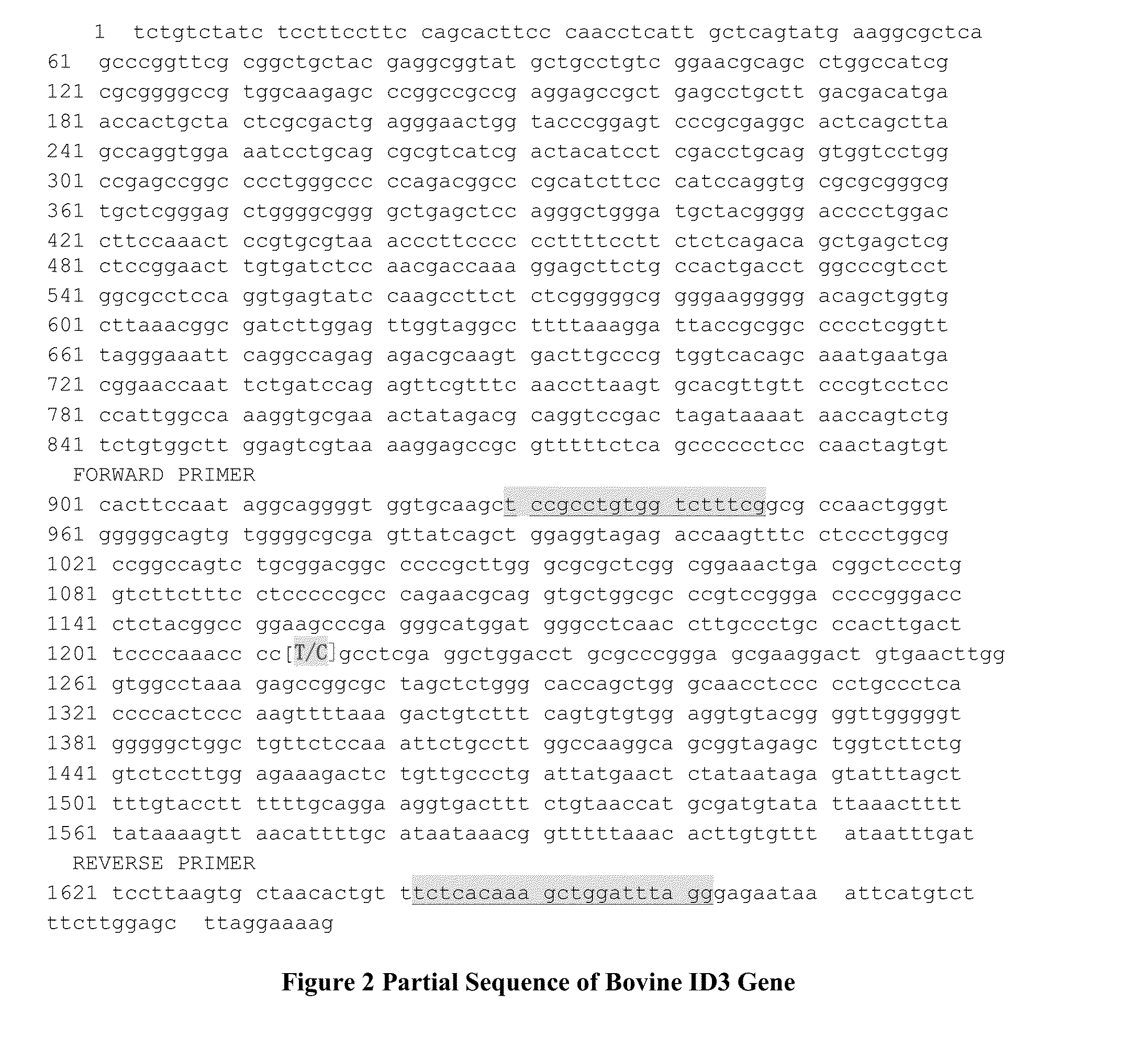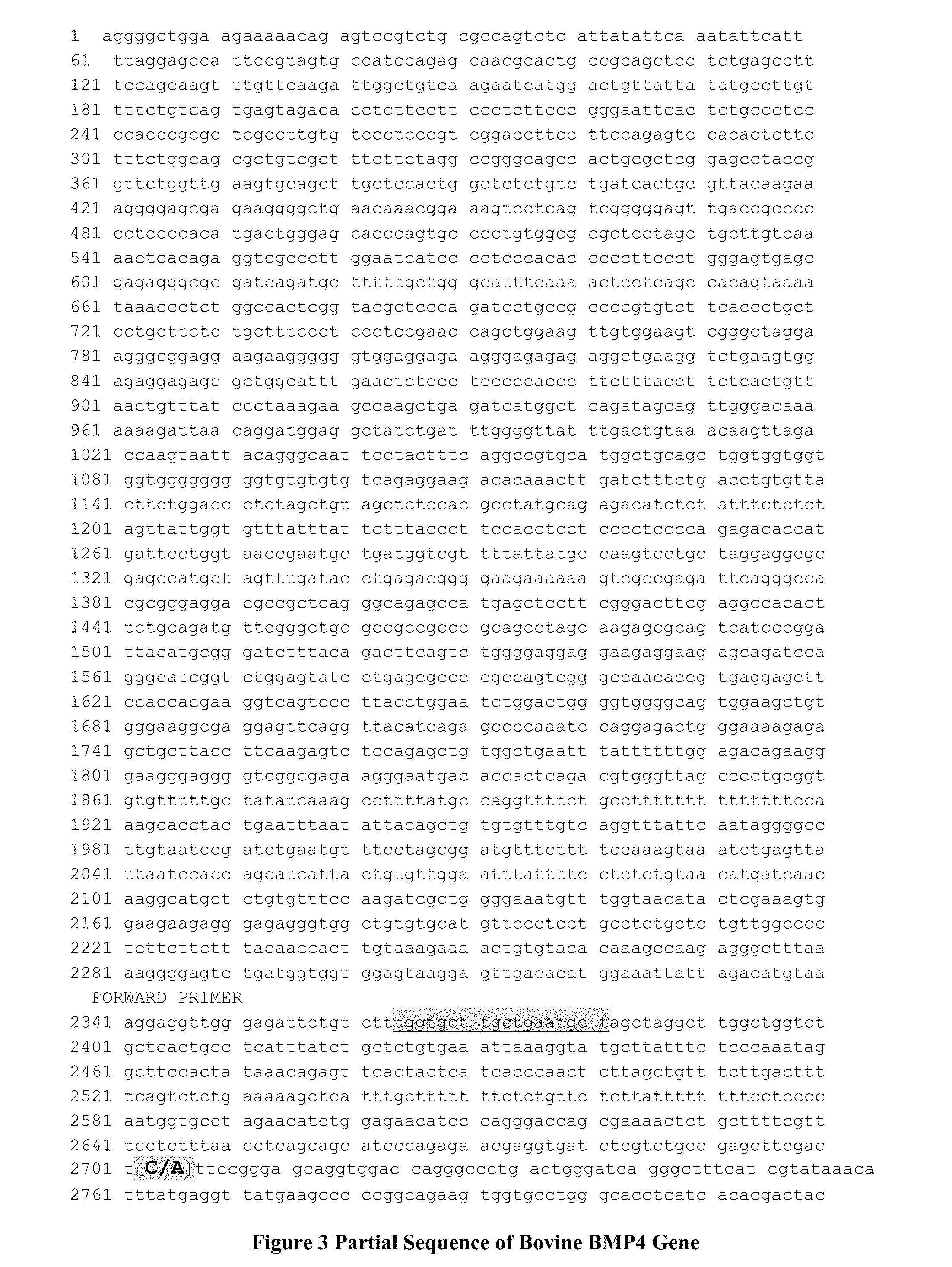Genetic testing for improved cattle fertility
a technology of genetic testing and cattle, applied in the field of genetic testing cattle, can solve the problems of difficult identification of specific genes, low accuracy, and substantial economic loss of dairy products, and achieve the effect of preserving the embryolial viability
- Summary
- Abstract
- Description
- Claims
- Application Information
AI Technical Summary
Benefits of technology
Problems solved by technology
Method used
Image
Examples
examples
Materials and Methods
[0083]In this study, two different experiments were performed to assess the involvement of the TGF-β pathway genes in embryo development and fertility traits. In the first experiment, we compared the expression profiles of the TGF-β pathway genes in two populations of embryos differing in their morphology and development. The most significant differentially expressed genes between the embryo groups were tested in the second experiment for genomic association with fertility traits in a cow population.
[0084]I. Expression Profiles of TGF-β Pathway Genes in Cattle Embryos
[0085]Embryo Production and Morphological Classification
[0086]Oocytes were aspirated from ovaries obtained from a local slaughterhouse and underwent maturation until they were combined with frozen-thawed semen. The procedures of in vitro fertilization and subsequent embryo culture were as described in Khatib et al. (2008a,b). Embryos that showed signs of cellular compaction by Day 5 of culture (moru...
PUM
 Login to View More
Login to View More Abstract
Description
Claims
Application Information
 Login to View More
Login to View More - R&D
- Intellectual Property
- Life Sciences
- Materials
- Tech Scout
- Unparalleled Data Quality
- Higher Quality Content
- 60% Fewer Hallucinations
Browse by: Latest US Patents, China's latest patents, Technical Efficacy Thesaurus, Application Domain, Technology Topic, Popular Technical Reports.
© 2025 PatSnap. All rights reserved.Legal|Privacy policy|Modern Slavery Act Transparency Statement|Sitemap|About US| Contact US: help@patsnap.com



